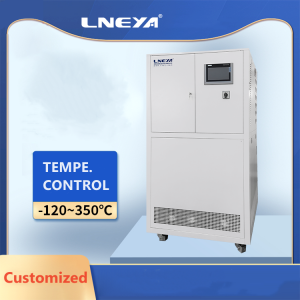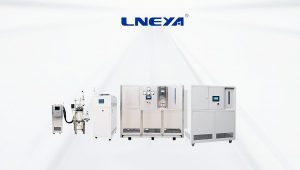The Method That Small Water Cooled Chiller Needs To Follow When Charging Refrigerant
In our life, we believe that everyone is very familiar with refrigeration. In the central air conditioning and industrial production process cooling industry, small water cooled chiller is more common. This unit is composed of a compressor in the fuselage, a horizontal shell and tube condenser, an evaporator, a thermal expansion valve, and some related parts. Under the cooperation of these auxiliary parts, the overall small water cooled chiller is compact in structure, convenient in operation and control, and is popular among the public in the market.
For refrigeration systems that do not have a high pressure reservoir and a low pressure vapor-liquid separator, the control of refrigerant charge is particularly important. Because the refrigeration system is a condenser and also acts as a high-pressure reservoir, the refrigerant is stored in the condenser, and the condenser is cooled. The heat dissipation area is reduced and the condensing pressure is increased, resulting in a decrease in cooling capacity.
For the control of the refrigerant charge of such small water cooled chillers, the following methods are followed during the filling process:
First, touch the temperature of the condenser casing.
The upper outlet of the condenser outlet is heated above the outlet, and the outlet below the outlet is cool. (There is a description of the high temperature exhaust of the compressor in the inside. The cooling indicates that the small water-cooled chiller is a liquid space.)
Second, look at the inspiratory pressure.
Corresponding to the temperature of the refrigerant water in the evaporator. (That is, corresponding to the evaporation temperature.)
Third, look at the compressor return pipe temperature.
The high-temperature unit return pipe should be cooled and dew, but it can be dew condensation to the compressor return valve; the low-temperature unit return pipe should be frosted, but the frost can be connected to the compressor return valve. If condensation or frost builds up on the compressor casing, liquid refrigerant will enter the crankcase, causing the compressor to run back and cause liquid problem.
Похожие рекомендации
-
Введение в систему управления температурой нагрева-охлаждения бродильного резервуара
1846В фармацевтической и биохимической промышленности резервуар для ферментации должен быть оснащен системой нагрева, охлаждения и контроля температуры для управления температурой в системе. Система охлаждения, нагрева, охлаждения и контроля температуры LNEYA...
Посмотреть детали -
Which reactions need temperature control in the process of chemical and pharmaceutical production?
1680Precise temperature control plays a crucial role in the reaction process during synthesis/crystallization in the production of chemical and pharmaceutical products. In the field of fine chemicals, many chemical reaction processes and crystallizati...
Посмотреть детали -
Поиск и устранение неисправностей высокотемпературного испытательного оборудования
1727Высокая температура испытательного оборудования в основном вызвана нехваткой воды в системе циркуляции воды. Таким образом, очищенная вода пополняется в резервуаре для воды до тех пор, пока уровень воды на нижней правой стороне резервуара для воды не достигнет примерно 80% ...
Посмотреть детали -
Selection Method of Water Cooled Chiller or Air Cooled Chiller
1671Nowadays, the application of industrial water chiller has involved various industries, including petrochemical industry, plastic industry, electronic industry, vacuum coating and so on. However, when purchasing industrial water chillers, many ente...
Посмотреть детали
 LNEYA Промышленные чиллеры Производитель Поставщик
LNEYA Промышленные чиллеры Производитель Поставщик













